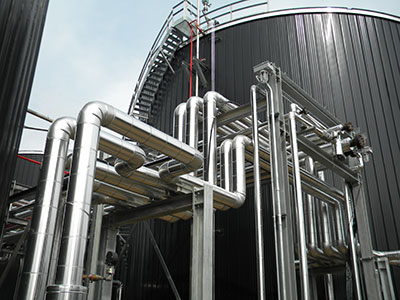When picking insulation materials, you see two names—cellular glass and foam glass. Are these just different labels, or do they mean something different?
Cellular glass and foam glass refer to the same insulation material. Both terms describe a lightweight, rigid, glass-based product filled with tiny, airtight bubbles. These bubbles make the material waterproof, fireproof, and strong for industrial use.

Many suppliers and engineers use “cellular glass” and “foam glass” to mean the same thing. The terms come from translations and technical habits in different countries. I often work with clients who ask for one and mean the other. Both names point to a glass material that delivers long-term performance for industrial tanks and pipes. Once you know they’re the same, you can save time and skip confusion with your procurement or technical teams.
What is a cellular glass?
If you manage tanks or chemical plants, you need insulation that stops water, resists damage, and lasts for decades. Engineers trust cellular glass for these jobs because it meets these demands without trouble.
Cellular glass is an insulation material made by heating crushed glass with a foaming agent in a kiln. This process traps millions of gas bubbles inside the glass, creating a solid block that won’t absorb water and can handle fire, chemicals, or weight.

The structure of cellular glass is special—it is glass packed with tiny, sealed bubbles. Water and vapor cannot move through it, even if the block is drilled or cut. This design stops corrosion and rust on your tanks, no matter if they store liquid gases or chemicals. Hans, my customer in Germany, uses cellular glass because it keeps tank bases and pipework dry and safe for years on end. He relies on it for long-term stability and peace of mind.
Cellular glass is strong enough to walk on, takes pressure from tank walls, and resists acids or oils. Its fire resistance means no risk if there’s a leak or accident. The insulation value stays steady, so tanks save energy, and operators worry less about compliance issues.
How is cellular glass made?
You notice “cellular glass” or “foam glass” on blueprints, but how do manufacturers create this special block? The steps in making it matter for quality and reliability.
To make cellular glass, recycled glass is ground up and mixed with a foaming agent such as carbon. This mixture goes into a mold and is heated in a big furnace. When it gets hot enough, the foaming agent releases gas. These gases form small bubbles inside the softened glass. After heating, the material cools quickly, which freezes the bubbles into place. The final product is a stiff slab containing millions of separate, airtight bubbles.

This production method keeps the bubbles closed off so water and vapor cannot enter the block. The slabs are cut and shaped for tank walls, pipe covers, or base insulation. In my factory, each batch is tested for density, leak resistance, and fire ratings because even small changes in the process can lead to gaps or weak spots. Hans always wants certified cell structure before agreeing to an installation because he knows factory control decides the material’s success in harsh plant conditions. Reliable manufacturing means the insulation blocks will protect equipment for decades.
Is foam glass insulation waterproof?
Waterproof insulation keeps tanks safe from corrosion and cuts down on maintenance repairs. Hans always asks about water resistance before making a choice.
Foam glass is completely waterproof. The closed-cell bubble structure blocks water and vapor from entering. This keeps the metal tank shell dry and safe from rust and mold, even after years underground or in wet conditions.

Whether installed on a tank base or a chilled pipe, foam glass holds out water and moisture. The bubbles inside do not touch each other, so even when the surface gets damaged, water still cannot move through the material. Hans uses foam glass for old chemical tanks that sit outside all year. It stops leaks, swelling, and breakdown better than traditional insulation. Other materials might soak up rain or condensation and lose strength. Foam glass gives clean, dry, and stable protection so you don’t worry after storms or spills.
What is the temperature range for cellular glass insulation?
Industrial tanks face both freezing and hot conditions. Plant engineers need insulation that won’t crack or fail at either end of the spectrum.
Cellular glass performs across a wide temperature range, from as low as -196°C up to +430°C. You can use it to insulate cryogenic tanks storing liquid gases or steam pipes carrying intense heat.
Cellular glass is dependable in subzero cold and extreme heat. The blocks do not shrink, burn, or warp. Hans can use cellular glass for both LNG storage and process chemical tanks in the same plant. It does not change when temperatures rise and fall quickly, such as during shutdowns or fast restarts. For maintenance teams, this means fewer problems and longer lifespans for insulation—cutting costs and boosting safety. Since only one product is needed for all tank types, training and procurement become easier too.
Conclusion
Cellular glass and foam glass are two names for the same material. This insulation is waterproof, fireproof, and built to work across tough industrial conditions.

